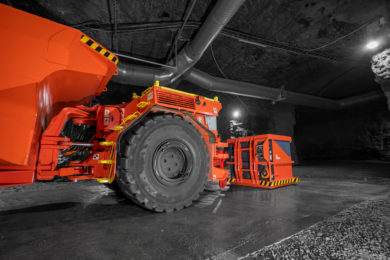India’s ENVIS Centre on Environmental Problems of Mining reports that, as part of India’s resource security efforts to increase mineral production, the National Institution for Transforming India (Niti) Aayog has asked the ministry of mining to prepare a vision document outlining the sector’s strategy while gearing towards 2030.
Niti Aayog, the National Democratic Alliance (NDA) government’s think tank, has also called for reduction in mineral imports and optimal use of mineral resources.
“We have been asked by the Niti Aayog to prepare a vision document for the mineral sector in the country. The process is on and we will be submitting it by next week,” said a senior mines ministry official on condition of anonymity.
According to a recent report published by the Council on Energy, Environment and Water, the country will fall short of critical minerals, which need to be used for developing clean-energy applications and also for manufacturing high-tech products.
India may heavily rely on China to source these materials, much needed for its manufacturing sector, the report added. These include beryllium, chromium, germanium, limestone, niobium, graphite, rare earths, tantalum and zirconium, among others.
The NDA government amended the Mines and Minerals (Development and Regulation) Act, 1957, in March last year, which allows auction of mines excluding coal and lignite. A total of seven mines have been auctioned in Jharkhand, Odisha and Chhattisgarh under the MMDR, with state governments set to receive revenues of more than Rs.18,146 crore over a period of 50 years—the entire term for which the mines have been auctioned.
Another mines ministry official, who also did not want to be named, said that the Niti Aayog has also raised the issue of sustainable mining and the vision document will clearly spell out steps being taken in this regard.
Meanwhile, the Ministry of Mines has unveiled a web portal for the easy access to information regarding the mining sector in India, including a framework for rating mines.
“The Ministry, through the Indian Bureau of Mines, has developed a template for the star rating of mines,” Mines Secretary Balvinder Kumar said at the launch function. “The web portal will have all the ratings of the mines and will also have information of the Sustainable Development Framework (SDF) for the mining sector.”
The star rating system, which rates mines out of five stars, is a two-layered system based on a self-evaluation by the mine operator, which is then validated by the Indian Bureau of Mines under the Ministry of Mines.
“There will be random third-party checks to see whether the information provided by the operators is correct, and there should be penalties for those providing false information,” Mines Minister Piyush Goyal said, also speaking at the event. The star rating system will be based on parameters such as efforts taken to mitigate environmental impact of the mines and to resettle and rehabilitate the people affected and the adoption of international standards for mining operations and reporting.
“The main objective of this system is to bring all mines to minimum 4- or 5-star rating in the shortest possible time,” Mr. Kumar said. Goyal also asked Ministry officials to ensure that by March 31 mine operators also upload all relevant permissions from the government onto the portal.
Goyal added that the Ministry of Steel was still looking into relaxation of export duties on iron ore.
Goyal wants all mines in India to compulsorily subscribe to the star rating system.
India’s mineral production for financial year 2015-16 increased by 9% to 495 Mt. However, the overall growth in terms of value decelerated by 11% to Rs.39,767.3 crore during the same period.
Experts think the focus of the vision document should be implementation, and concerned ministries and public sector units should be made accountable for it.
“The first and foremost priority should be to fulfil the country’s mineral requirements to achieve desired growth. Moreover, yearly achievement should also be measured by the government,” said V.S. Jain, former Chairman of the state-run Steel Authority of India Ltd.
In a bid to boost private investment in the sector and accelerate mineral exploration further, the government has also come up with the National Mineral Exploration Policy (NMEP) in June this year which allows private companies to explore the country’s mineral reserves.
Blocks containing lead, zinc, gold, silver, diamond and iron ore will be allocated to public and private agencies for reconnaissance or early-stage exploration. These blocks will be awarded on a revenue-sharing basis in case exploration efforts lead to discovery of auctionable resources.
On the back of higher production of iron ore and chromite, India’s overall mineral production during the first quarter of the current financial year has gone up 14% to 138.53 Mt compared with 121.11 Mt during the corresponding April-June period last year.










